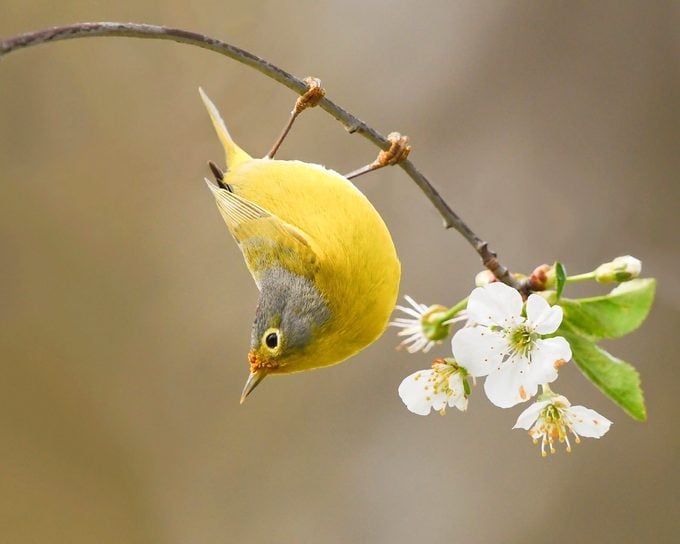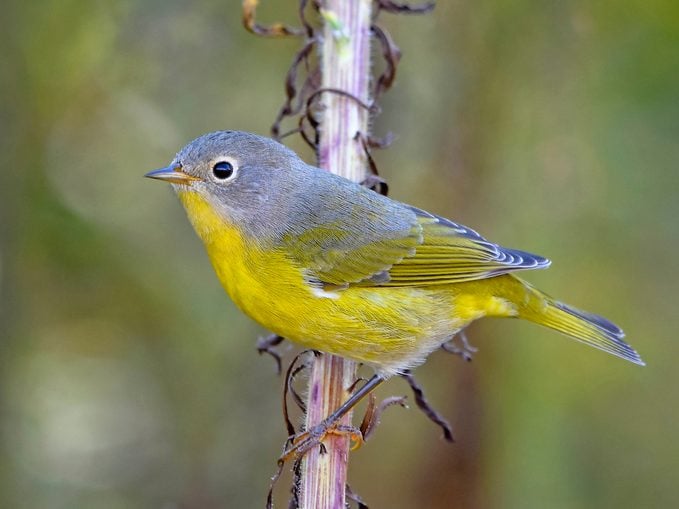Meet the Acrobatic Nashville Warbler
Updated: Mar. 22, 2022
Learn how to identify Nashville warblers. See what these tiny, active songbirds look like, learn about their habitat and what they like to eat.
 How to Identify Nashville Warblers
How to Identify Nashville Warblers
A Nashville warbler’s most distinct marking is its white eye ring. Also look for a gray head and a yellow throat and chest. This bird was discovered by pioneer birder Alexander Wilson in Nashville, Tennessee. Despite its name, this warbler doesn’t nest in Tennessee. The species breeds much farther north in bogs and coniferous woods, among other habitats. During spring migration, look for the quick, active Nashville warbler in thickets and small trees. They primarily spend the winter in Mexico.
Nashville warblers eat insects, so they seldom come to bird feeders. However, you may be able to attract these birds with a birdbath, because migrating warblers are strongly drawn to water.
“I took this photo of an acrobatic Nashville warbler hanging on my backyard cherry tree in spring. It’s special to me because I live in the suburbs and don’t often see migrating warblers in my yard. This Nashville warbler was catching insects buzzing around the blooms,” says Andy Raupp of Elgin, Illinois.
Check out 10 spring warblers you should know.

“There’s a nice quiet spot along the cliffs in a little village in Ontario called Port Bruce. I love spending a few quiet days there in fall, watching the warblers migrate. You just never know what you might see. On this particular day, a beautiful Nashville warbler made an appearance and was quite photogenic as I sat and photographed it,” says Trisha Snider of St. Thomas, Ontario.
Next, learn how to identify yellow warblers, palm warblers, magnolia warblers and Wilson’s warblers.




















